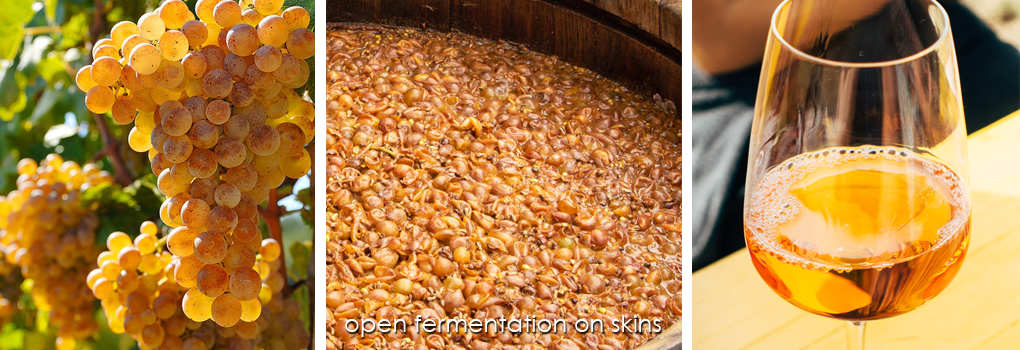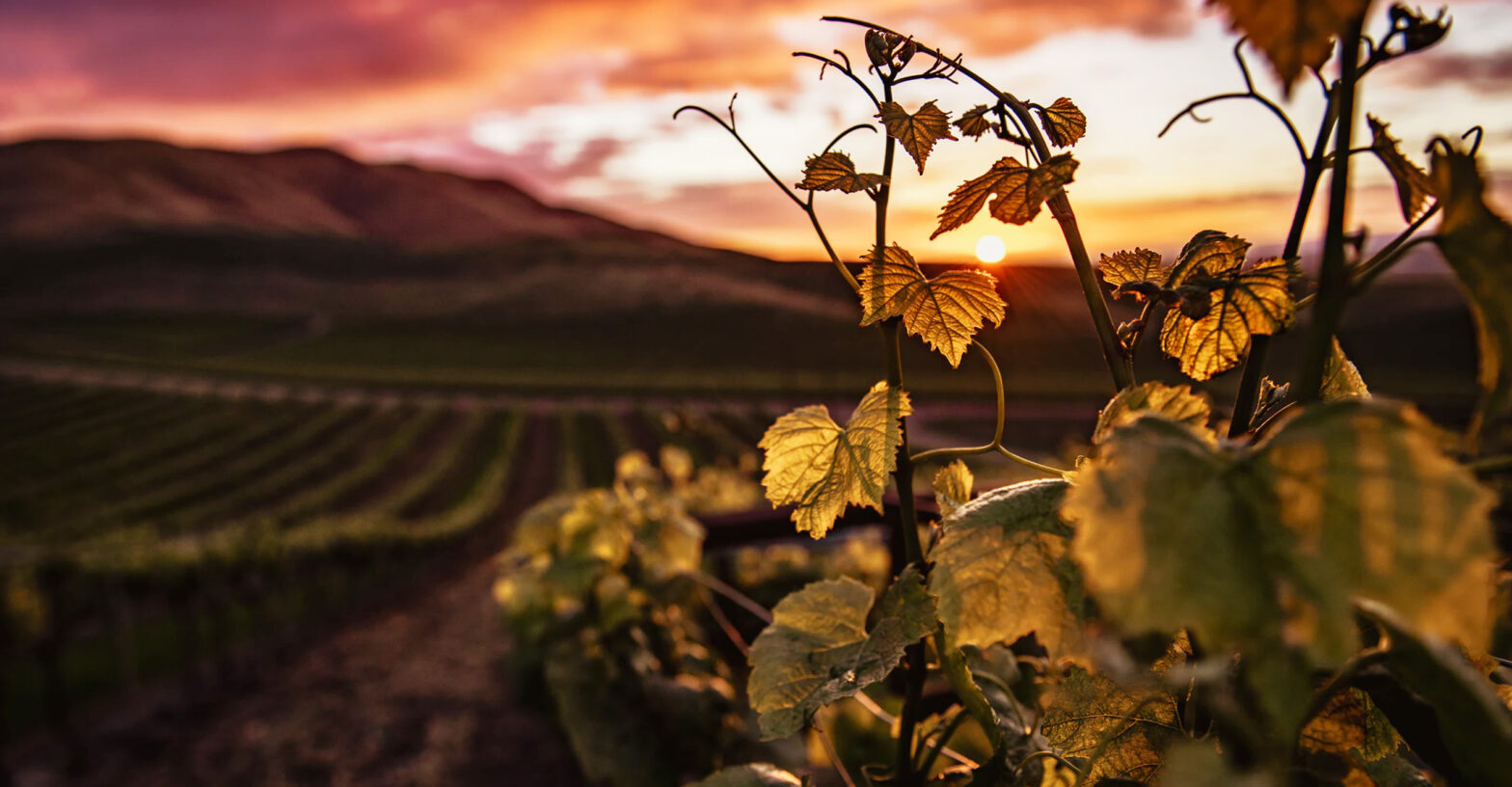Sustainable Winegrowing in New Zealand:
In conventional viticulture - grape growers follow the conceptual framework of Integrated Pest Management (IPM), which includes careful monitoring, preventive cultural practices and, once economic threshold levels are reached, a combination of the use of synthetic pesticides and biological control strategies.
Sustainable Winegrowing New Zealand (SWNZ) was established in 1995 as an industry initiative directed through New Zealand Winegrowers and was commercially introduced across New Zealand in 1997 and adopted by growers from all grape growing regions.
Sustainable Winegrowing New Zealand was developed in order to guarantee better quality assurance from the vineyard through to the bottle. Assure consumers that wines are made with minimal impact on both the natural and social environment.
The New Zealand wine industry has a strong commitment to sustainable production in the vineyards, practices inside the winery and beyond…, and it is my belief that more should be said about sustainability in the New Zealand wine message in the worlds wine markets.
To New Zealand’s winemakers and grape-growers, sustainability means delivering excellent wine to consumers while helping the natural environment, local businesses and communities involved to thrive.
For the New Zealand wine industry it represents a commitment to protect the places that make our unique wines.
Sustainable Winegrowing New Zealand is widely recognised as a world-leading sustainability program and was one of the first to be established for and in the international wine industry. SWNZ certifies all parts and stages of the production chain.
The New Zealand Winegrowers’ Sustainability Policy requires all wine to be made from 100% certified grapes in fully-certified winemaking facilities - *(i.e. the growing, winemaking, all processes after right through to the final consumer…along with involving the customer…e.g. recycling). Monitor, measure, reduce...and then repeat *(with ongoing learnings…)
Sustainable certification must be awarded through an independently audited program - either Sustainable Winegrowing New Zealand or a recognised organic or biodynamic certification. All members must complete annual submissions and undergo regular on-site audits. New Zealand has a high level of commitment to sustainable production, as is evident by the fact that the greatest proportion of our electricity is produced from renewable resources. In the early 1990's the wine industry recognised that the natural resources of NZ, and the industry, were of significant value and needed to be protected.
The industry was undergoing rapid vineyard expansion. Along with this growth there was new pressure on land and water resources, accompanied with issues related to changing land use. It was felt that developing guidelines for sustainable viticulture would help establish good practice and would also provide a valuable education tool by which results from research could be shared.
Sustainable Winegrowing New Zealand Continuous Improvement is an industry driven initiative that has been developed to cement New Zealand’s position as the world leader in sustainability.
In 2002, a new module was launched to provide guidance on sustainable management of wineries. Following wide industry consultation, in 2007 New Zealand Winegrowers (the industry body) announced a bold Sustainability Policy aimed at having all New Zealand wines being produced under independently audited environmental programmes by 2012.
Although developed relatively recently, the SWNZ winery programme has been adopted relatively quickly - approximately *97% of the NZ vineyard producing area is included in the program as of 2021.
Sustainability is a Culture - to thrive with limited resources, the need to treasure what we have.
Pillars of Sustainability: Biodiversity • By-Products • Soil • Air • Water • Energy • Pest & Disease Management • Business • People and more recently Climate Change.
The Sustainable Winegrowing New Zealand program is based on continuous improvement and adherence to recommendations and guidelines issued by the International Organisation of Vine and Wine (OIV).
10 x Pillars of Sustainability - www.nzwine.com
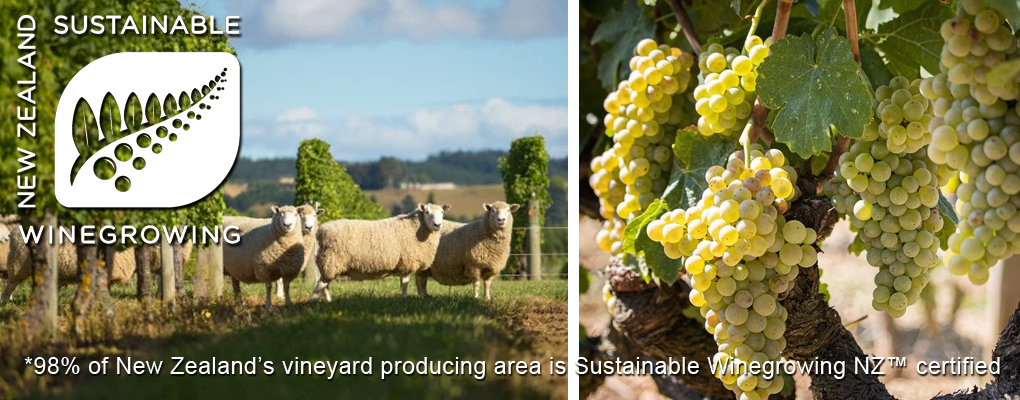
Organic Wine:
At the most basic level, organic wine is made from grapes that have been grown without the use of chemical fertilizers, pesticides, fungicides, herbicides or synthetic chemicals. The main categories of winemaking include: Sustainable, Organic, Natural and Biodynamic.
Organic grape & wine production is a growing part of the New Zealand wine industry & culture. Approximately 10% of New Zealand wineries now hold organic *certification at some level - *(growing grape or full wine production techniques) - *(as of 2019 there were 48 fully certified organic wineries in NZ out of *716).
In organic winemaking you will find some significant differences, both in the winemakers’ approach to growing grapes and the end result in the bottle. Note - grape growing like any other farming is organic by origin. However, like most other methods of farming the vast majority of vineyards today are not organic in practices. For many winemakers, especially large-scale wine companies, it is not cost effective to grow completely organically, as far too many things can go wrong throughout the growing season that can easily damage or destroy their grape crops and harvest potential in volume and quality.
Chemical fertilizers are predominantly used to remove vineyard destroying diseases. Organic wines are produced by using only organically grown grapes. No chemical fertilizers, pesticides etc..., of any kind are allowed on the vines or in the soil of the vineyards claiming to be organic.
Organic grape growers work in harmony with the rhythms and processes of nature, eliminating the need for synthetic chemicals and endeavouring to produce wines that are as pure as possible and reflect its origins.
Strict rules govern the winemaking process such as: 100% hand-harvesting of the grapes, the types of yeasts that can be used during fermentation and even storage conditions in the wineries of all imported and domestic wines that attain 'Organic Certification'. *(though it must be noted several International certification standards & practices vary from those set in NZ).
The International Federation of Organic Agriculture Movements (IFOAM) defines organic agriculture as follows:
‘Organic agriculture is a production system that sustains the health of soils, ecosystems and people’.
Organic winemakers refrain from all chemical substances used to stabilize conventional wines such as sulphites. It is important to remem7ber that sulphites are a natural by-product of the fermentation process and that it is impossible for any wine to be completely free of sulphites, as fermenting yeasts present on all grape skins generates naturally occurring sulphites.
Organic wines may have naturally occurring sulphites, but the total sulphite level in the finished wine must be less than 20ppm in order to receive organic certification. Wines labelled 'organic' cannot contain added sulphites (during the winemaking process). Wines that have added sulphites, but are otherwise organic, are labelled 'wine made from organic grapes'.
All certified organic and biodynamic producers must pass annual audits to ensure practices & compliance with international organic standards. Growers must adhere to organic methods for three years before attaining full certification.
Organic Certifier's in New Zealand:
• BioGro - biogro.co.nz
• AsureQuality - asurequality.com
• Demeter - biodynamic.org.nz
• Organic Farm New Zealand - organicfarm.org.nz
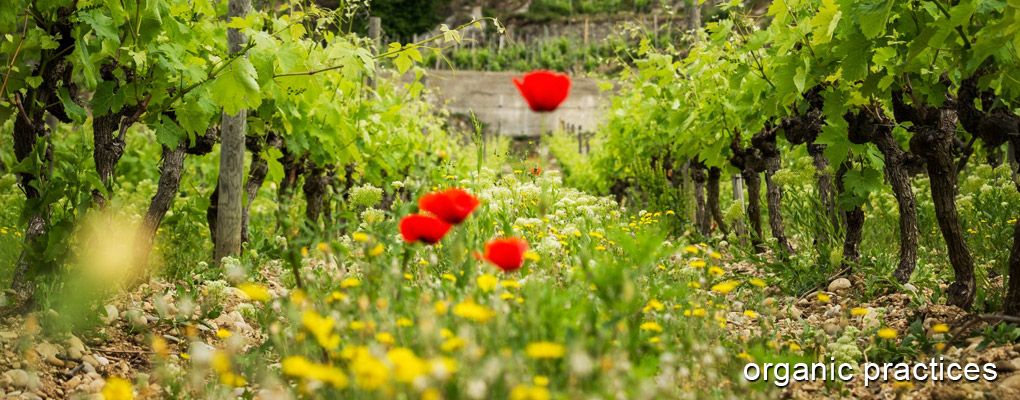
Biodynamic Wines:
Biodynamic grape-growers follow the same standard practices as all organic grape-growers. Though added to those grape growing practices, biodynamic growers use special plant, animal and mineral preparations, and work closely with the rhythmic influences of the sun, moon and planets to maximise the natural potency of their land.
Biodynamic grape-growers encourage biological control and use crop protectants and fertilizers from naturally produced sources, such as botanical pesticides or animal by-products. Botanical insecticides are naturally occurring chemicals (insect toxins) extracted or derived from plants or minerals, also called natural insecticides.
As with the previous methodology - every certified Biodynamic producer goes through an annual audit to make sure their practices meet strict standards. Growers must follow organic methods for three years before attaining full certification.
The practice of biodynamics in viticulture (quality grape growing for the production of wine) has become popular in recent years in several wine growing regions across; France, Switzerland, Italy, Austria, Germany, Australia, Chile, South Africa, Canada, United States and here in New Zealand.
As of *2016 - there are approximately *750 biodynamic fully certified wine producers worldwide. Currently for a wine to be labelled 'biodynamic' it has to meet the stringent standards laid down by the Demeter Association, which is an internationally recognized certifying body.
Like biodynamic agriculture in general, biodynamic viticulture stems from the ideas and suggestions of Rudolf Steiner (1861-1925), who gave his now famous 'Agriculture Course' back in June 1924.
The principles and practices of biodynamics are based on his spiritual and practical philosophy, called anthroposophy. Along with taking other factors into account such as the lunar calendar and astrology. It is more about the entire lifeblood of a vineyard - other plants, insects and animals - not just the grape vines.
There are 9 key preparations used in biodynamic wine, with the first two being some of the most important.
Preparation 500 for example, consists of cow manure buried in a cow horn in the soil. Along with preparation 501, which is made of powdered quartz silica, which is again buried in a cow horn for six months, then dug up and sprayed on the crops to stimulate growth.
Biodynamics embodies the ideal of ever-increasing ecological self-sufficiency just as with modern agro-ecology - this type of viticulture views the vineyard as a cohesive, interconnected living system. Some biodynamic grape growers claim to have achieved improvements in the health of their vineyards, specifically in the areas of biodiversity, soil fertility, crop nutrition, and pest, weed, and disease management. They also claim stronger, clearer, and more vibrant wine on the nose and palate, plus a better balance in growth, where the sugar production in the grapes coincides with physiological ripeness, resulting in a wine with good balance of flavour and alcohol content, even with changing climate conditions.
There are those that acknowledge the quality of some biodynamic wines, but the question remains whether many of the improvements in vineyard health and wine taste would have happened anyway if 'organic farming' was used, without the mysticism and increased effort involved in biodynamics...?
Organic Certifiers in New Zealand:
• Demeter - biodynamic.org.nz
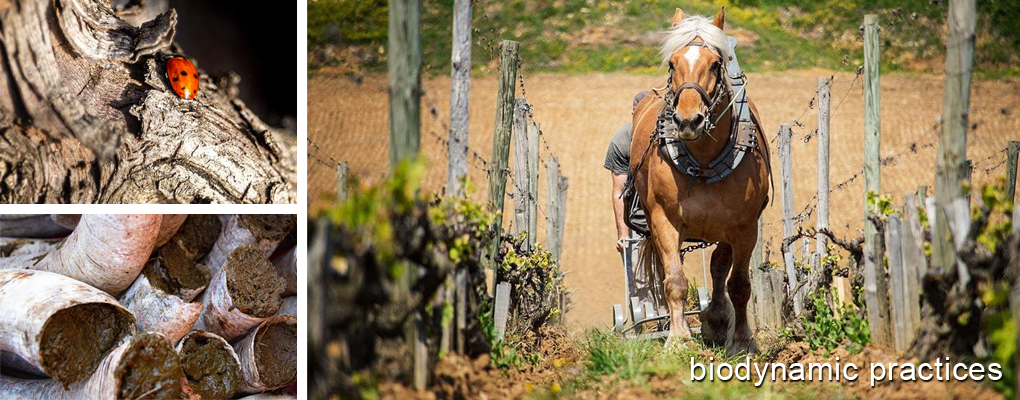
Natural Wine:
Natural wine is made with minimal intervention, both in growing grapes and the winemaking process. The term is used to distinguish such wine from 'sustainable' to ‘organic’ and ‘biodynamic’ wine because of different practices carried out in the winery. Natural wines are: farmed sustainably at a minimum and with most being organic and some growers are biodynamic in the vineyard as well - *(but currently, this does not need to be certified). Though please note that - not all organic and biodynamic wines are natural wines.
Natural wine is an unregulated term, so practices can vary from winemaker to winemaker. So just seeing the word ‘natural’ used in advertising or on a wine label, does not guarantee the same standards across the industry.
Natural wines are produced without adding or removing anything during the winemaking process, although some winemakers add a small amount of sulphur at bottling. So strictly speaking - their wines are not ‘natural’ wines, but organic (and possibly biodynamic).
Organic wine is organic in the sense of having been produced from ‘organically grown’ grapes - wine made from grapes grown in accordance with the principles of organic farming; which excludes the use of artificial chemical fertilizers, pesticides, fungicides and herbicides - but may be subject to chemical and technical adjustments in the winemaking process. Most natural wines have a lower alcohol content - (12.5% Alc./vol. or less) and tend to be made in a dry style - (less than 2g/L) - and have very-low levels of natural sulphites.
Currently *(2018) there exists no official or legal definition of ‘natural’ wine; neither has any legislation been passed to date by any regional, national or international authority, and currently there are no organizations that can certify that a wine is ‘natural’ - it is all on the integrity / word of the winemaker.
The following criteria are *generally accepted by most ‘Natural’ wine producers:
• Sustainably, Organically or biodynamically grown grapes - *(with or without certification).
• Dry-farmed (no irrigation), low-yielding vineyards.
• All grapes used are hand-picked - *(and local to the winery if possible).
• No added sugars, enrichment, no cultured yeasts, no foreign bacteria.
• No adjustments for acidity.
• No additives for colour, aromas, mouth-feel / texture, minerality, length etc.
• No external flavour additives, including new oak barrels, staves, chips or liquid extract.
• Minimal or no fining or filtration. *(i.e. wine can be slight cloudy)
• No heavy manipulation such as; micro-oxygenation, reverse osmosis or cryoextraction...
• Minimal or no added sulphites during winemaking - *and at bottling.
Natural wines made in this way can have a shorter shelf life and ageing potential than conventionally made and protected wines. So when buying natural wines, please do ask the supplier or winemaker for their experience - as each vintage and style of wine will taste and age differently. *(And when opened, they can tire faster than conventional wines).
The word ‘natural’ wine - also generally means that it is made in small volumes (sometimes just one or two barrels, or small tank), not typically a mass-produced wine, designed to taste as much as possible like the last vintage. So I encourage you to embrace the element of surprise; it's part of the journey with seasonal, small-batch, low intervention wine.
Natural wines tend to be more sensitive than conventionally produced wines, because they are more reactive to their environment, with slightly less protection. Age-ability of a natural wine depends on the quality of the fruit, how it was made and whether it is for immediate enjoyment - ‘vins de soif’ - bottled early and made for early drinking within the year.
Natural wines have long been made in France, Italy and Spain - there is now some interest in other countries like Australia, North & South America and more recently in New Zealand.
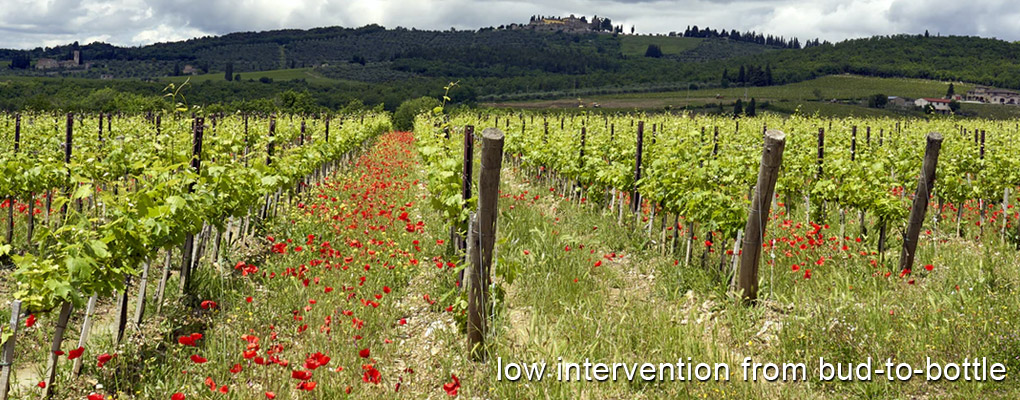
Dry Farming:
Dry Farming refers to grape growing without supplementary irrigation (i.e. no drip irrigation) - the way everyone used to farm and a hallmark of old-world viticulture. Dry farming relies on natural annual rainfall for growing grapes. This is actually not a problem for most of Europe’s classic grape-growing regions, such as Bordeaux and Burgundy, where too much rain is the greater issue than too little. In many wine regions, dry farming is obligatory, as irrigation is illegal - e.g. all AOP wines are dry farmed, Barolo, Brunello & the Douro Valley just to name a few.
However, more recently farming in dry regions - irrigation has become common practice, especially in the past few decades. There are two main reasons to dry farm: water conservation and grape quality. On the conservation side, dry farming can save a considerable volume of water per hectare annually. On the quality side, the practice leads to more intensely flavoured grapes. Dry-farmed grapes can be sweeter, denser and usually smaller in size. Too much water can dilute flavours and too little water can lead to raisins.
With Dry Farming - it is important to select a rootstock that will seek moisture deep into the soil (not just near the surface). Vines must be spaced sufficiently to get all the moisture they need - if you plant vines too close together, there is too much competition for water. And the correct soil mix is crucial to prevent moisture from escaping or evaporating. Grapevines are pretty adaptable, but there is more hands-on work required with dry farming.
But it should be noted that not every vineyard site can be dry farmed. Plus dry farming requires vineyard management and design that supports vine health and future growth without irrigation. Vineyard techniques will vary for each site, but here are some key concepts:
Controlling year-to-year variations in shoot growth, fruit yield and minimising vine growth variability within vineyards are among some of the key difficulties. The following assumes winter rainfall is sufficient to fill the soil encircling the grapevine root zone. If the root zone is less than full, the vines will likely undergo prolonged and severe water stress during the growing season and fruit yields and quality will suffer. Some growers avoid this problem with irrigation, applied prior to bud-burst, often with a temporary irrigation system.
• Cover crops have their benefits - but they also compete with grapevines for soil resources, including water, and for this reason, they are potentially detrimental. To conserve soil moisture for vine use, they must be mowed and incorporated immediately before or very early in the growing season. Cultivation also creates a surface layer of loose soil (i.e. a mulch) on the surface that serves as a barrier to moisture evaporation.
• Canopy management is another component of soil moisture conservation in dry farmed vineyards. The primary objective of canopy management is to limit the number of leaves, as long as their small number or removal does not expose clusters to direct afternoon sunlight. All with the aim to maintain a balance between crop and canopy that favours timely fruit maturation and optimum grape quality.
Consequently, pests, diseases, deficiencies, toxicities, and other stresses that damage leaves must be managed accordingly and where feasible, proactively. Mite infestations, severe water stress, heat stress, and sunlight stress are particularly difficult to avoid for dry farmed vines and require extra diligence.
• Root- Zone management options are more limited for dry farmed compared to irrigated vineyards. Autumn is the only effective time to apply soil amendments and organic fertilizers to the soil, as this timing has the advantage of moisture from winter rains to activate these materials. Grape vines growing in soils with a higher moisture holding capacity (deep, moderate to heavy texture) are more suitable for dry farming than vines in soils with low moisture holding capacity (shallow, rocky, with a light texture). Finally, vineyards located in areas with lower evaporative demands are better suited than vineyards in areas of higher evaporation.
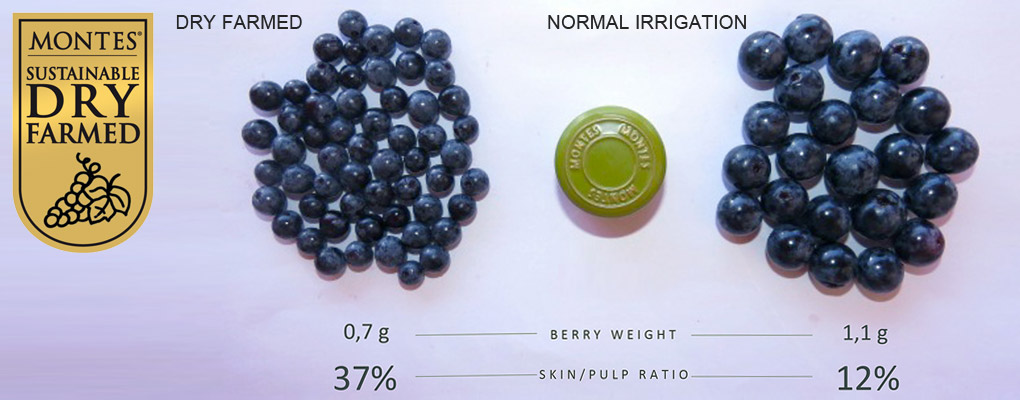
Orange Wine:
Orange wine - is not wine made from oranges. Orange wine is wine made from white wine grape varietals that have spent some maceration time in contact with the grape skins.
Typically white wine production involves crushing the grapes and quickly removing the juice off the skins into fermentation tanks or vats. The grape skins contain colour pigment, phenols and tannins that are often considered undesirable for white wines - while for red wines, skin contact and maceration is a vital part of the winemaking process that gives red wines its colour, aromas, flavour, texture, character and finish.
Orange wines get their name from the darker, slightly orange tinge that the white wines receive due to their contact with the colouring pigments of the chosen grape skins.
These are white grapes which are left to ferment and exposed to subtle oxidation *(with little or no added sulphur), giving them a colour that verges on the orange, pale honey colour.
This winemaking style is essentially the opposite of 'rosé' production which involves taking red wine grape juice quickly off their skins, leaving the wine with a slightly pinkish hue. However in the case of Pinot Grigio / Gris, among one of the more popular grape varietals chosen to apply slight skin-contact treatment that is neither red nor white. The diffuse nature of the term becomes illustrated, as both an orange wine and a rosé might achieve a similar expression of coral / tangerine / orange coloured wine.
The practice has a long history in winemaking dating back thousands of years to the Eurasian wine producing country of Georgia. In recent years the practice has been adopted by Italian winemakers, initially in the northern Friuli-Venezia Giulia wine region, while there is also production in countries like; Slovenia, Croatia, France, Germany, California, Australia and also New Zealand to name a few.
Orange wines were not uncommon in Italy in the 1950's and 1960's, but gradually became rare as technically correct and fresh-bright white varietal wines came to be more widely enjoyed on the local and international market. NB: once open, they age very quickly.
